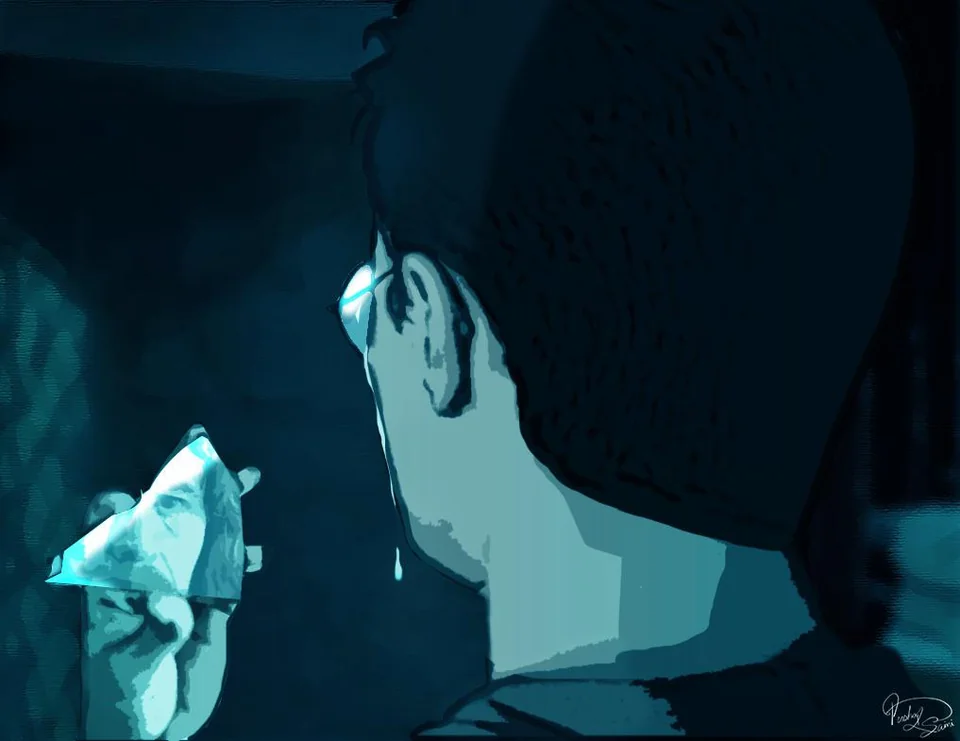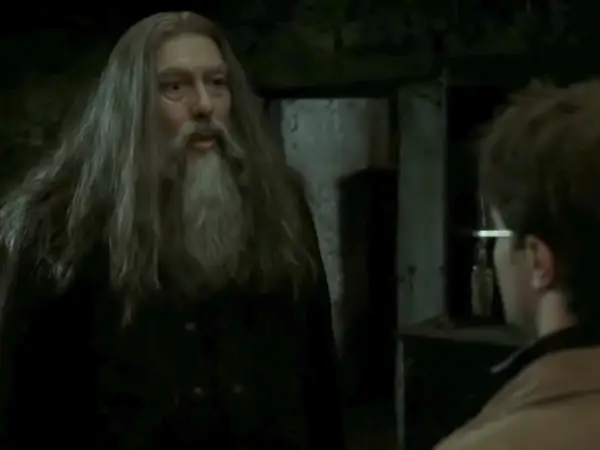Muggle Magic: What the Mirror of Erised and the Two-Way Mirror Teach Us about Social Media (Part Two)
By Ian McLaughlin
Part One of this essay focused on comparing the Mirror of Erised and the media side of social media. It discussed echo chambers, environments where “a person only encounters information or opinions that reflect and reinforce their own.” It also talked about how social media and search engines use recommended content algorithms (RCAs) to predict what information users will want to see. Unfortunately, the human tendency toward homophily, or a preference toward information we already agree with, means that RCAs are programmed to create echo chambers online.
This part turns toward the social side and points to another magical mirror, Sirius’ Two-Way Mirror. Just as the orientations of the user with the Mirror of Erised parallel social media users and their feeds, the Two-Way Mirror parallels the orientations of video calls, conferences, and other forms of computer-mediated communication (CMC)—or ways people interact using computers, including texting, Facetime, Direct Messaging, and social media comments.
The physical orientations of the Two-Way Mirror align with those of mundane—or non-magical—mirrors discussed in Part One. However, just as the Mirror of Erised had other orientations based on its magic, the Two-Way Mirror also expands on and complicates the orientations of mundane mirrors. The primary purpose of the Two-Way Mirror is to orient two people toward each other. Therefore for this artifact to be used to its full potential, two users must face their mirrors in a situation where communicating otherwise would be impractical. The mirrors then use a magical connection to allow the users to communicate. Synchronous CMC, or ways of communicating in real-time using computers, works much the same way, projecting video and audio versions of other users and their thoughts onto our screens and vice-versa.
The interpersonal orientation of synchronous CMC and the Two-Way Mirror creates an interesting psychological effect, false affiliation. It’s partly due to CMC’s inability to transmit affiliation cues. These non-conscious behaviors create a feeling of attachment between participants. The framing of the computer screen limits these cues, creating a false sense of connection between users.
How information is framed during video chats is mirrored when Harry contacts Aberforth in Deathly Hallows. Harry uses the Two-Way Mirror as a last-ditch effort to escape imprisonment by Death Eaters. However, he only has a shard of his mirror, so he cannot see all of the face looking back. While the mirrors themselves originally had physical frames, this shard of the mirror further limits what information Harry receives. All he sees is a familiar blue eye peering back at him, which he recognizes as Dumbledore’s.
The eye is Dumbledore’s, but Aberforth’s, not Albus’s. Harry has seen Aberforth in Hogsmeade and other places but has yet to have a meaningful conversation or relationship with him. This limits Harry’s inferences about who is on the other side of the mirror.
Similarly, video chats and conferences can build a false sense of affiliation between users by leaving the information they need to develop those connections out of frame. For a real-world example, we need only think of all the stories from the last few years regarding people being in Zoom meetings dressed appropriately—but only from the waist up. Dressing this way shortens the time needed to get ready for work. However, it may also hide a lack of respect for the job or lead to inappropriate moments if they are careless about their camera angles.
In the Deathly Hallows, Harry uses the shard as a last-ditch effort to get help escaping from Voldemort’s followers. He is forced to orient himself toward whoever is on the other side of the Two-Way Mirror. In this exchange, Aberforth says nothing, and Harry only says, “Help us!” (DH Ch 23,) and gives their location. Harry makes assumptions that the person on the other end of the mirror is friendly to them because the eye is Dumbledore’s. This assumption is partially correct, but because of the limited framing of information, Harry’s assumption could just as easily have been wrong. Harry was partially wrong because he hoped and counted on the eye he saw as Albus’s.
Furthermore, this brief exchange did nothing to build trust between Harry and Aberforth. When the two characters meet, Aberforth is openly distrustful of Harry because Albus’s plans have caused him pain in the past. Harry and Aberforth have to start building their relationship from scratch.
As mentioned in my previous post, framing does not extend only to the physical structure of a user’s view of another user. It also applies to a person’s information in which they can frame new information—their frame of reference. Social media users can internalize their frame of reference via RCAs. Once internalized, the user’s tendency toward homophily will amplify the potential of an echo chamber.
When social media user forms an echo chamber, they will measure all new information against it to prove—or disprove—its factuality. Examining Harry’s frame of reference regarding the Two-Way Mirror shows how sources other than the information received through social media feeds and CMC help form a frame of reference.
When Sirius gave Harry the Two-Way mirror, he had previously proven to be an unreliable source of advice. Therefore, Harry—at the urging of Ron and Hermione—framed the mirror as another reckless idea and oriented himself against its use. However, after Sirius’s death, Harry quickly reframes his perspective on using the mirror, blaming himself. He thinks using The Two-Way Mirror might have changed what had happened. (OotP Ch38). Similarly, social media limits agency by limiting new information. Not only do RCAs only suggest what will keep the user’s eyes on their feeds, but comment sections shape how a social media user frames that information.
Just as Ron and Hermione’s comments about Sirius shaped Harry’s frame of reference regarding the Two-Way Mirror, a comment section can create a homophilic community. When this happens, information is reflected off a series of mirrors: first, the rhetorical mirror of the post, then the affective mirror of how they feel about the person who posted it, then the mirrors of the people who commented on it, then their frame of reference. Each of these mirrors is warped in particular ways. So any information gained via social media has become a reflection of a reflection, which is not dissimilar from how a sentence gets distorted when children play a game of telephone.
Just as a physical mirror allows objective observation of the physical self, magical mirrors and social media enable accurate observation of the metaphysical self. Part One discussed how the Mirror of Erised, like social media allows us to grow by revealing the intricacies of our thoughts, allowing us opportunities to grow and expand on them. The Two-Way mirror adds another layer.
Harry refuses to use the mirror when he first receives it. In doing so, Harry removed an opportunity to see an aspect of himself Sirius reflected, his reckless need to act and to be informed. Harry cut off their connection because he felt Sirius did not understand the situation. But Sirius did understand. His frame of reference was simply different from Harry’s.
When Harry uses the Two-Way Mirror, he connects with someone he had previously ignored, Aberforth. He then follows up in person and forges a direct connection with the younger Dumbledore, confronting his betrayal and confusion toward Albus. Aberforth reflects Harry’s feelings back to him, shattering his echo chamber of doubt and helping him come to a fuller understanding of Albus and the mission to defeat Voldemort. Through Harry’s and Aberforth’s actions, the Two-Way Mirror shows that building connections with others and allowing them to reflect sides of ourselves that we may not want to acknowledge is vital in breaking out of echo chambers.
Where the Mirror of Erised shows us how echo chambers are created, Two-Way Mirror shows that building genuine connections with others and allowing them to reflect sides of ourselves that we may not want to acknowledge is vital in breaking out of echo chambers. Further, the more we expand our research beyond the information we agree with, the more RCAs will help us expand beyond our echo chambers.
Ian McLaughlin (he/him), Hufflepuff, earned his MA in English from the University of North Carolina at Greensboro in 2022 and is currently a Master’s of Library Science student at UNCG. Previous versions of this research have been presented at the Harry Potter Academic Conference (2021) and the Graduate Research and Creativity Expo at UNCG (2022) which are posted on his academic profile.




